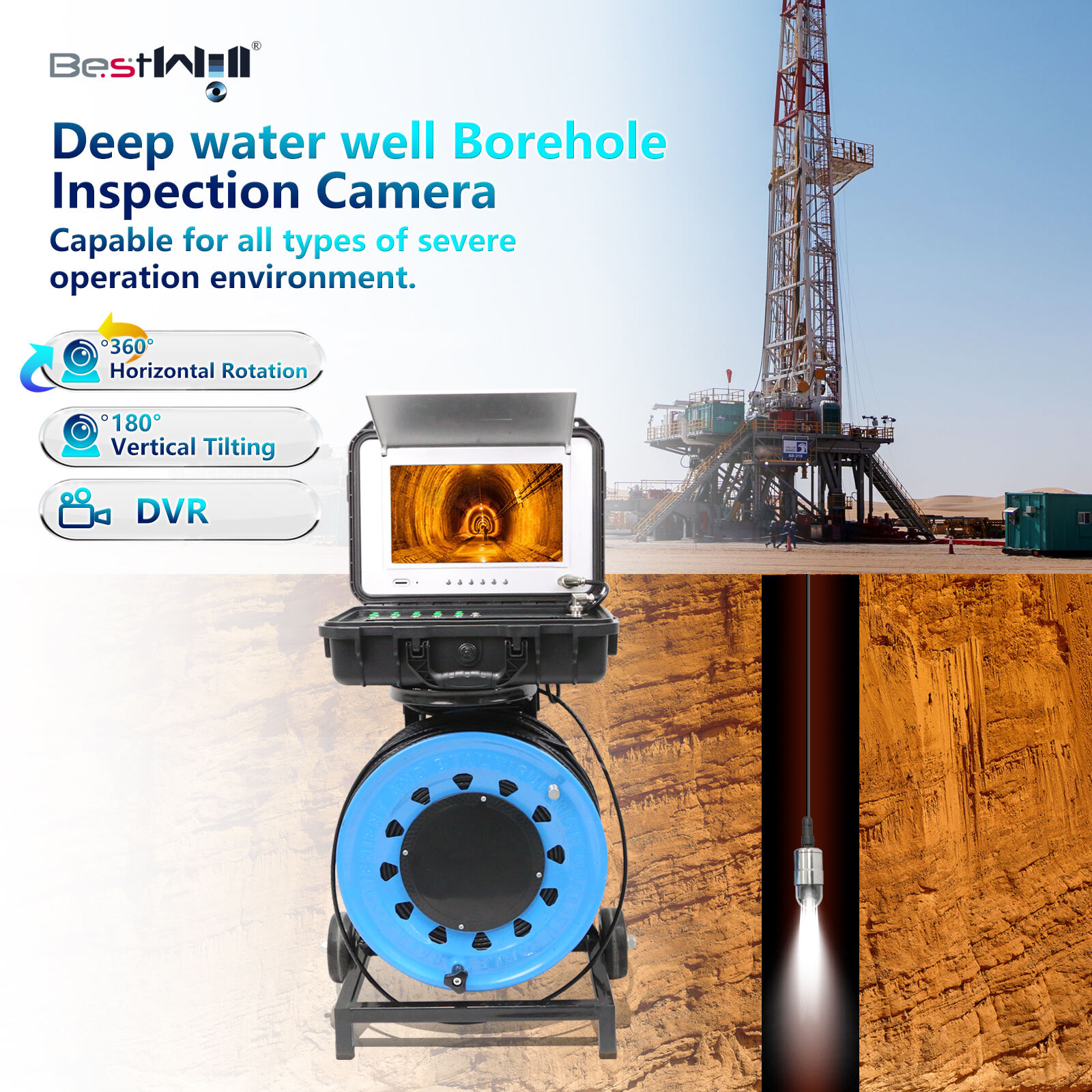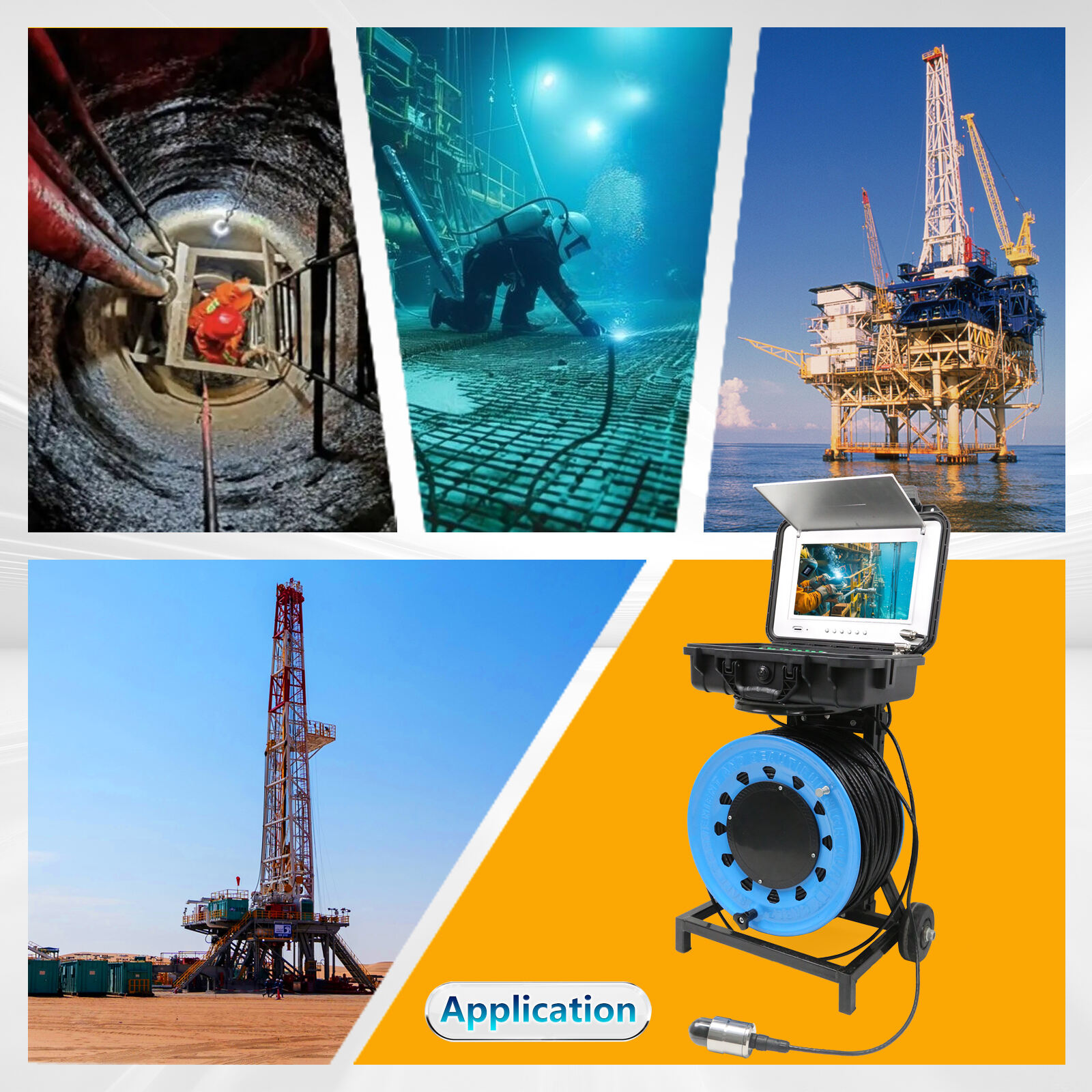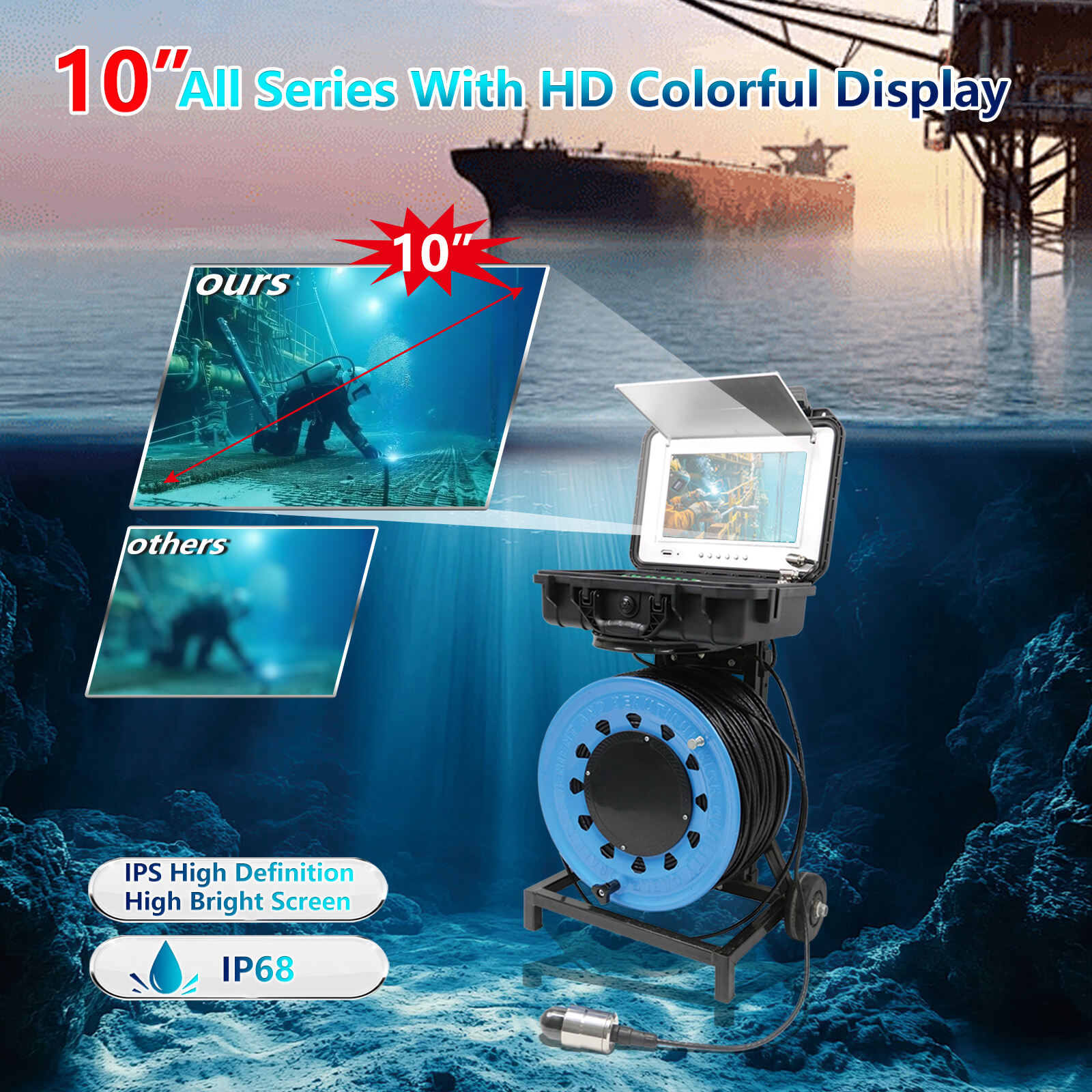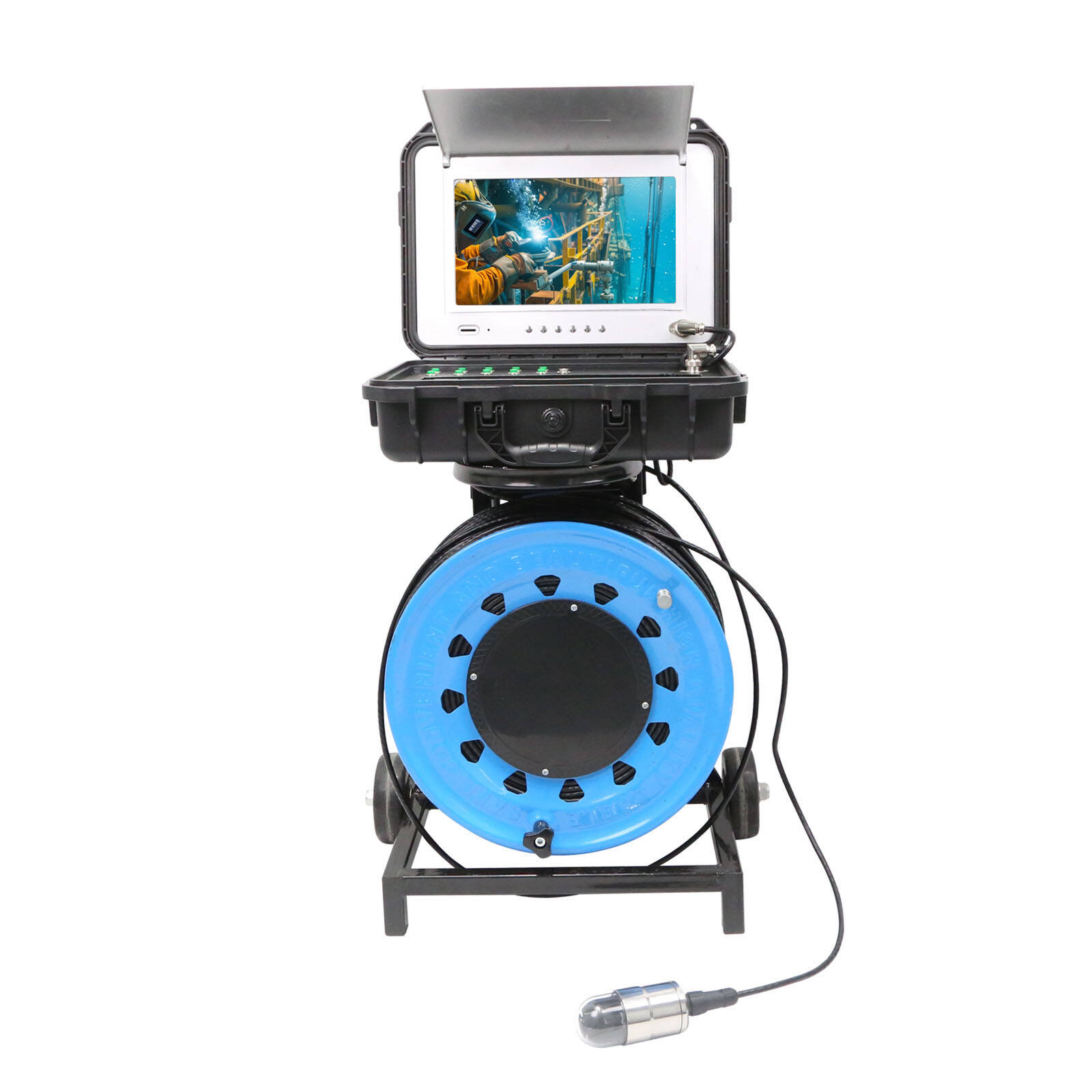الدور الحاسم لكاميرات فحص البئر في المشاريع البحرية
أصبحت كاميرات فحص الآبار ضرورية للكشف عن المشاكل الهيكلية المخفية تحت السطح والتي قد تؤدي إلى أعطال كبيرة في المستقبل بالنسبة لأعمال البناء البحري. تتيح هذه الأجهزة للمهندسين فحص الجيولوجيا تحت الأرضية دون الحاجة إلى حفر كل شيء، مما يحافظ على البنية البحرية آمنة ومستقرة على المدى الطويل. تتميز الكاميرات بتقنية التصوير عالي الوضوح والتي تلتقط صوراً واضحة للغاية، مما يمكّن المتخصصين من اكتشاف أشياء مثل الشقوق الدقيقة والفراغات وأنواعاً أخرى من المشاكل في المناطق التي يصعب الوصول إليها عادةً. تشير التقارير الصادرة عن القطاع إلى أن اكتشاف هذه المشاكل مبكراً أثناء الفحص يمكن أن يقلل من تكاليف الإصلاح بنسبة تصل إلى 30 في المئة، وهو ما يفسر سبب استثمار المزيد من الشركات في هذا النوع من التكنولوجيا كجزء من خطط الصيانة الروتينية الخاصة بها. وبعيداً عن توفير التكاليف فقط، فإن هذه الطريقة تساعد في منع الأعطال المفاجئة وتجعل البنية التحتية المكلفة تحت الماء تدوم لفترة أطول بكثير مما كانت ستكون عليه بدونها.
اكتشاف نقاط الضعف الهيكلية تحت السطح
تعد كاميرات فحص الآبار مهمة للغاية لاكتشاف المشكلات الهيكلية المخفية تحت مستوى الأرض، وهي مسألة بالغة الأهمية للحفاظ على سلامة المشاريع البحرية وضمان سيرها بسلاسة. توفر هذه الأنظمة الكاميرية للمهندسين وسيلة لفحص ما يحدث داخل طبقات الصخور دون الحاجة إلى حفر كل شيء، مما يسمح لهم باكتشاف المشكلات قبل أن تتفاقم إلى مشكلات كبيرة. وباستخدام تقنية التصوير عالي الدقة، يمكن للمشغلين رؤية الشقوق الناشئة، وتحديد الفراغات، وملاحظة مختلف التشوهات في الأماكن التي لا يمكن لأحد الاقتراب منها. خذ على سبيل المثال أعمال الأساسات البحرية، حيث تتيح الصور الواضحة الملتقطة عبر كاميرات الحفر تحديد نقاط الضعف التي قد تؤدي في النهاية إلى انهيار المباني بالكامل. وبحسب تقارير صادرة عن القطاع، فإن اكتشاف هذه المشكلات مبكرًا من خلال الفحص المناسب يقلل من تكاليف الإصلاح الباهظة بنسبة تصل إلى 30 بالمائة. وهذا أمر منطقي إذا أخذنا في الاعتبار كمية الأموال التي تُهدر في إصلاح الأضرار التي يمكن تجنبها لاحقًا.
SeaMax Borehole Video Camera

تقدم كاميرا الفيديو SeaMax Borehole قدرات تصوير بدقة عالية ضرورية لاكتشاف نقاط الضعف الهيكلية في البيئات البحرية. يلتقط عدستها المتقدمة صورًا تفصيلية لتساعد في الكشف المبكر والصيانة للهياكل تحت السطح.
- [كاميرا الفيديو SeaMax Borehole](https://example.com/seamax-borehole-camera)
مراقبة تراكم الرواسب في الحفر البحري
من المهم للغاية مراقبة تراكم الرواسب عند إدارة عمليات الحفر في عرض البحر بسلاسة وتجنب المواقف الخطرة التي قد تنشأ هناك. تسمح كاميرات الحفر للطواقم بفحص مستويات الرواسب بشكل دوري، وهو أمر بالغ الأهمية لكشف الانهيارات المحتملة أو فشل الهياكل الناتج عن تحرك الرواسب تحت قاع البحر. وبفضل التحديثات البصرية المستمرة من هذه الكاميرات، يمكن للعمال تعديل منهجيتهم حسب الحاجة، مما يوفّر الوقت والمال على المدى الطويل. وبحسب تقارير من مؤتمر التكنولوجيا البحرية، فإن الشركات التي تستخدم التكنولوجيا المرئية لمراقبة الرواسب تشهد عادةً زيادة تصل إلى 25% في كفاءة عملياتها. وبعيدًا عن الأرقام، فإن هذا النوع من النظام يزوّد المشغلين بمعلومات أفضل، مما يساعدهم على الحفاظ على سلامة المشاريع مع إنجاز المهام بكفاءة في البحار حيث تظل الظروف متغيرة باستمرار.
كاميرا مراقبة الرواسب OceanPro

توفّر كاميرا مراقبة الرواسب OceanPro بيانات بصرية في الوقت الفعلي لتحليل تراكم الرواسب، وهو أمر حيوي لتحسين عمليات الحفر البحري. تُحسّن تقنية الفيديو الخاصة بها الكفاءة من خلال السماح بإجراء تعديلات فورية في استراتيجيات الحفر بناءً على التغيرات الرسوبية.
- [كاميرا مراقبة الرواسب OceanPro](https://example.com/oceanpro-sediment-monitoring-camera)
الوقاية من فشل المعدات في الظروف القاسية
تلعب كاميرات الحفر دوراً أساسياً في منع تعطل المعدات، خاصةً في ظل الظروف الصعبة تحت الماء التي تواجه العديد من العمليات البحرية. لا تُجدي طرق الفحص التقليدية نفعاً في تلك البيئة القاسية - الرؤية محدودة، والضغط مرتفع للغاية، ومدة بقاء الغواصين محدودة. تتمكن هذه الكاميرات المتخصصة من اكتشاف علامات التحذير المبكر مثل بقع الصدأ أو نقاط الضعف الهيكلية قبل أن تتفاقم إلى مشاكل كبيرة. عادةً ما تلاحظ الشركات التي تقوم بإجراء فحوصات دورية باستخدام كاميرات الحفر انخفاضاً في فواتير الإصلاحات وتقلصاً كبيراً في أوقات التوقف. تشير التقارير الصادرة عن القطاع إلى أن معدلات الأعطال تنخفض بنسبة تصل إلى 40٪ في المنشآت التي تطبّق عمليات فحص دورية بالكاميرات، وهو ما يُحدث فرقاً كبيراً في سير العمليات اليومية. بالنسبة للمنصات النفطية، مواقع البناء تحت الماء، ومشاريع البنية التحتية البحرية الأخرى، فإن الحفاظ على تشغيل المعدات بسلاسة يعني تجنّب التأخيرات المكلفة والحفاظ على استمرارية التقدم في المشاريع التي تُقدّر بملايين الدولارات.
كاميرا مراقبة المعدات DurableWave

تمكين كاميرا مراقبة المعدات DurableWave اكتشاف مبكر للتآكل والتلف على المعدات في الظروف المائية الشديدة، وهو أمر بالغ الأهمية لتقليل التوقف عن العمل وتكاليف الصيانة بشكل كبير في المشاريع البحرية.
- [كاميرا مراقبة معدات DurableWave](https://example.com/durablewave-equipment-surveillance-camera)
تطور تقنيات كاميرات الحفر للاستخدام البحري
التصوير عالي الدقة لتحليل دقيق
الآن تأتي أحدث تحسينات الكاميرات المُدخلة في الآبار مع إمكانيات تصوير عالية الدقة (HD) التي ترفع بشكل كبير من كفاءة عمليات الفحص تحت الماء. توفر هذه الكاميرات دقة تصوير عالية تُعطي صورة أفضل بكثير، مما يسمح للجيولوجيين بأداء أعمال التحليل الخاصة بهم بشكل صحيح، واتخاذ جميع القرارات المهمة أثناء العمل على المشاريع البحرية. عندما يتمكن المهندسون من رؤية صور أوضح لما يحدث تحت سطح الماء، فإنهم يستطيعون تقييم الظروف تحت الماء بدقة أكبر بكثير، مما يقلل من الأخطاء. وبحسب بعض الدراسات السوقية الأخيرة، فقد ارتفع الطلب على أنظمة التصوير عالي الدقة هذه بنسبة تقارب 60٪ خلال بضع سنوات فقط. ويبدو أن الصناعة بأكملها تتجه نحو اعتماد أساليب أكثر دقة في التحليل في الأعمال الهندسية، وهذا أمر منطقي بالنظر إلى تكلفة الأخطاء الباهظة في العمليات البحرية، حيث تكون الأمور معقدة بما يكفي في الأصل.
أنظمة كاميرات الحفر المحمولة لمواقع بعيدة
لقد تطورت أنظمة الكاميرات المحمولة للفتحات بشكل كبير، مما جعل من السهل فحص الأماكن الصعبة الوصول إليها مثل خطوط الأنابيب تحت الماء أو هياكل الآبار العميقة. تركز أحدث الموديلات على سهولة الحمل دون التفريط في الميزات المهمة، بحيث يمكن للمفتشين إنجاز أعمالهم في الأماكن التي تحتاج إليها بالفعل. نحن نتحدث عن معدات يقل وزنها عن 20 رطلاً (ما يعادل نحو 9 كجم) لكنها لا تزال متينة أمام الظروف الصعبة. لم تعد فرق العمل في الميدان تعاني من المعدات الثقيلة عندما يحتاجون إلى فحص المشاكل في المناطق النائية. أفاد مهنيو الصناعة بأن هذه الأنظمة الجديدة تقلل من وقت الفحص بنسبة تصل إلى 50٪ مقارنة بالطرق القديمة. يعني هذا التحسن في السرعة أن المشاريع تُنجز أسرع، وتتم الإصلاحات قبل فوات الأوان، وهو أمر بالغ الأهمية في عالم العمليات البحرية حيث تعني تكاليف التوقف عن العمل خسائر مالية كبيرة.
مواد مقاومة للتآكل لمحيطات المياه المالحة
بدأت كاميرات الآبار الحديثة المُستخدمة في البيئات تحت الماء باستخدام مواد أكثر مقاومة لأضرار المياه المالحة. هذه التغييرات تعني أن معدات التفتيش تدوم لفترة أطول وتحافظ على أدائها بكفاءة حتى في ظروف المحيط القاسية. وقد قام مهندسو البحار مؤخرًا بإضافة طلاءات وسبائك خاصة إلى تصميم الكاميرات، مما يُساعدها على البقاء لفترة أطول في بيئتها المالحة. تشير بعض التقارير الميدانية إلى أن التحول إلى هذه المواد المقاومة يُخفض تكاليف الإصلاح بنسبة 30% تقريبًا بعد بضع سنوات، مما يُحدث فرقًا كبيرًا في تخطيط ميزانية أعمال البناء البحرية. وغالبًا ما يجد المقاولون الذين يُجرون هذا التحول أنفسهم يُنفقون أموالًا أقل على عمليات الاستبدال أثناء عمليات التفتيش الروتينية.
تعزيز السلامة والامتثال للوائح
تقليل دخول الإنسان إلى المناطق الخطرة
توفر كاميرات تفتيش الآبار ميزة كبيرة من خلال تقليل الحاجة إلى دخول الأشخاص إلى مناطق خطرة تحت الماء، مما يجعل العملية بأكملها أكثر أماناً بكثير. بدلًا من إرسال العمال إلى مواقف خطرة، تتيح هذه الأجهزة للمشغلين فحص الظروف من خلال بث فيديو عن بُعد. وهذا يعني أن عددًا أقل من الموظفين يدخلون البيئات المحتملة القاتلة فعليًا. تحسينات السلامة واضحة هنا، وممارسة هذا الأسلوب تتماشى تمامًا مع ما تقوم به معظم الصناعات لحماية عمالها. نظرة على الأرقام من قطاع النقل البحري تُظهر أيضًا شيئًا مثيرًا للإعجاب. عندما بدأت الشركات باستخدام طرق التفتيش عن بُعد من هذا النوع، بما في ذلك كاميرات الآبار تحديدًا، انخفضت معدلات الحوادث بأكثر من النصف في العديد من الحالات. ولأي شخص يشارك في الأعمال تحت الماء، يصبح من الواضح سبب اعتماد هذه الكاميرات بشكل كبير في الحفاظ على سلامة الجميع أثناء إنجاز المهمة بشكل صحيح.
التوافق مع معايير الفحص البحري الدولية
تساعد كاميرات تفتيش الآبار الشركات على الالتزام بمعايير التفتيش البحري الدولية، وهو أمر يجب عليهم الالتزام به إذا أرادوا الحفاظ على رخص تشغيلهم وشهادات السلامة الخاصة بهم. تسجل الكاميرات مقاطع فيديو مباشرة تُعد دليلاً قوياً عندما يطلب المفتشون الإثبات، مما يجعل عملية الامتثال المعقدة بشكل طبيعي أكثر سلاسة. أصبحت الشركات البحرية تهتم بشكل كبير بالمساءلة والشفافية في الآونة الأخيرة، لذا فإن اعتماد تقنيات مثل كاميرات الآبار لم يعد مجرد خيار جيد، بل أصبح ضروريًا بالنسبة لعديد من مشغلي السفن. تشير التحليلات السوقية الحديثة إلى استمرار هذه الظاهرة حيث يدرك المزيد من شركات الشحن أهمية هذه المعايير. لا تقتصر فوائد تقنية تفتيش الآبار على تقليل الأوراق الرسمية فقط، بل إنها تحسن العمليات اليومية أيضًا، وتعكس الالتزام الحقيقي باتباع بروتوكولات السلامة وقواعد الحماية البيئية على نطاق واسع.
دراسات الحالة: كاميرات فحص الآبار في العمل
تقييم سلامة خطوط الأنابيب في أعماق البحار
لقد شهد مشغلو خطوط الأنابيب في أعماق البحار فوائد حقيقية من استخدام كاميرات الحفر أثناء عمليات الفحص الخاصة بالسلامة، وفقاً للتقارير الميدانية المتعددة. تتمكن الكاميرات من اكتشاف نقاط الضعف في جدران الأنابيب والمناطق المُصابة بالصدأ والتي قد تبقى بدون اكتشاف لولا ذلك حتى يكون الوقت متأخراً جداً. ما يجعل هذه الكاميرات مفيدة إلى هذه الدرجة هو قدرتها على فحص خطوط الأنابيب بدقة دون الحاجة إلى إيقاف العمليات أو حفر أجزاء من قاع البحر. وبالنسبة للمنصات البحرية، حيث تُكلّف فترات التوقف الملايين، فهذا يعني أن المهندسين قادرون على الكشف عن المشاكل المحتملة أثناء استمرار العمل بسلاسة. وقد أفادت الشركات بانخفاض أعمال الإصلاح الطارئة بنسبة تقارب 35% بعد تنفيذ عمليات الفحص بالكاميرات بشكل دوري. وتلك التوفيرات ليست مفيدة للميزانيات فحسب، بل تمنع أيضاً التسرب الخطر قبل أن يحدث، مما يجعل هذه الكاميرات أداة لا غنى عنها لأي جهة جادة بشأن سلامة خطوط الأنابيب.
عمليات الإنقاذ باستخدام ملاحظات فيديو مباشرة
أصبحت كاميرات الحفر ضرورية أثناء أعمال الإنقاذ لأنها توفر للفِرَق فيديو مباشر في الوقت الذي يحتاجونه إليه أكثر ما يكون، خاصة في البيئات المائية الصعبة. بفضل هذه الكاميرات، يمكن للغواصين رؤية ما يحدث تحت السطح، تحديد العوائق التي تعترض طريقهم، وتحديد أفضل طريقة لاسترجاع ما يحتاج إلى رفعه. تُظهر التجربة أن امتلاك هذه المعلومات البصرية يُحدث فرقاً كبيراً - إذ تشير بعض الدراسات إلى ارتفاع معدلات النجاح بنسبة تقارب 20% عندما تستخدم الفرق هذه الكاميرات بانتظام. تسرد شركات الإنقاذ قصصاً عن كيفية إنقاذ هذه الكاميرات لعمليات بأكملها أثناء الطوارئ، حيث كان معرفة ما يحدث بالضبط تحت الماء هو الفارق بين الفشل والنجاح في تنفيذ عملية الإنقاذ. مع مرور الوقت، أصبحت القدرة على الرؤية الواضحة تحت الأمواج تجعل من هذه الكاميرات أداة أساسية لا غنى عنها لأي شخص جاد في ممارسة أعمال الإنقاذ بكفاءة.


